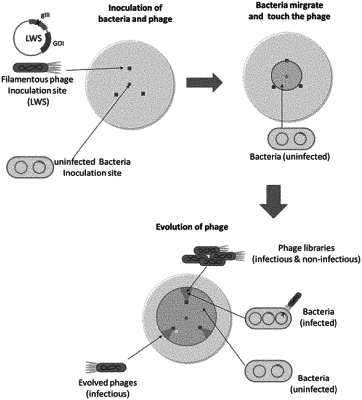| CPC C40B 30/06 (2013.01) [C12N 7/00 (2013.01); C12N 15/1058 (2013.01); C12N 15/70 (2013.01); C12N 15/85 (2013.01); C40B 50/06 (2013.01); C40B 60/08 (2013.01)] | 18 Claims |

|
1. A visual continuous spatial directed evolution method, comprising:
allowing a host to grow and move in a solid culture space, the host carrying a foreign target gene to be evolved, and the host itself containing a gene element that assists the evolution of the target gene, wherein the target gene is correlated with the growth and movement of the host; and
performing screening to obtain an evolved product depending on different spatial distribution patterns formed in the solid culture space during the process of growth and movement of the host,
wherein the target gene is located in a parasitic organism corresponding to the host and the parasitic organism is a bacteriophage.
|